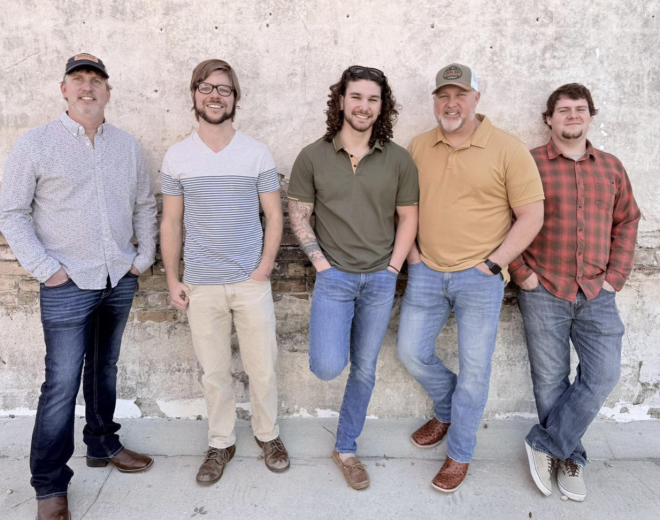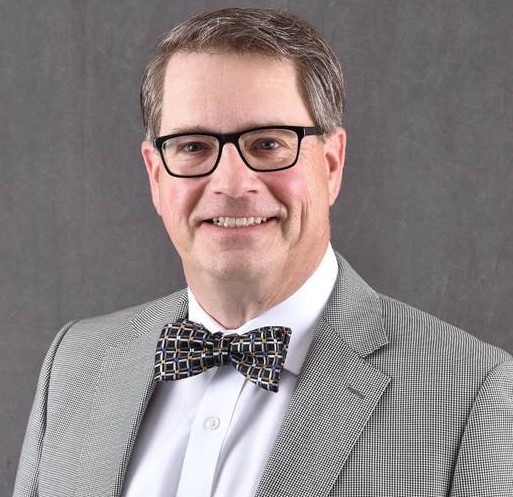Historically significant
Published 10:29 am Saturday, November 15, 2014

- African-American neighborhood circa 1895.
THOMASVILLE — In the fall of 2008, Dewey City was designated the ninth historic district in Thomasville and listed on the prestigious National Register of Historic Places.
Dewey City joined Dawson Street, Downtown, East End, Fletcherville, Gordon Avenue, Paradise Park, Stevens Street and Tockwotton-Love Place as Thomasville neighborhoods/districts recognized for historic value and deemed worthy of preservation.
Trending
The Dewey City Historic District is a stable, mostly African-American residential section of town with a long and very interesting story. The neighborhood had a major role in African-American history in Thomasville.
Dewey City is a single neighborhood made up of four historic plats. Its origins date back more than 140 years. Geographically, the neighborhood extends from Culpepper Street to Felix Street to North Martin Luther King Jr. Drive to Wolf Street. At its inception, however, Dewey City extended to within a mile of the Thomas County Courthouse.
What became the Dewey City subdivision was originally referred to in the Thomas County Survey as Land Lot 8, 13th district. The tract of land was owned by Simeon Alexander Smith, who later donated Paradise Park to the city.
In 1864, a Civil War prison camp for Union Army prisoners of war was erected in Dewey City. The prisoners of war were captured by the Confederate Army in Andersonville during Sherman’s infamous March to the Sea.
After marching from Andersonville to Thomasville, the POWs were kept at the prison camp in Dewey City for a few weeks. Part of the large ditch embankment dug by local plantation slaves and the Union POWs for the camp remains today.
After the conclusion of the Civil War, newly freed slaves looking for property they could purchase and build homes on came to Thomasville. Dewey City was made available exclusively for them.
Trending
According to historical accounts, Charles Bluett Quinn was sympathetic to the plight of freed slaves. Quinn reportedly purchased land “out of Thomasville” and built a series of two cabins for former slaves. He made arrangements with freed slaves who had no money to buy the cabins, allowing them to pay for the housing by working in construction for him or by cutting down trees. Quinn would eventually build a church and a recreational center for former slaves.
The following are chronological facts about Dewey City:
• 1864: Civil War prison camp was established.
• 1865-1899: Some houses were constructed by former slaves.
• 1895: Frederick Douglass visited Thomasville.
• 1899: The settlement was formally named for Admiral George Dewey, a hero in the Battle of Manila during the Spanish-American War (1898).
• 1899: The first plat of Dewey City — known as the Quinn and Cochran Addition — was completed.
• 1904: The Quinn and Cochran Addition was filed and recorded as the Dewey City Subdivision in city records.
• 1909: The first school for African-American students was constructed in Dewey City. This school contained grades one through 10.
• 1911: The northernmost part of Dewey City was platted in Thomasville by O.M. Smith on May 27. The section was originally referred to as either Pine Summitt or Homestead Park.
• 1914: A portion of the land platted by Lizzie J. Quinn and O.M. Smith was given to the city for the building of “a colored people’s school.”
• 1920s: During this decade, Dewey City High School was renamed Douglass High School in honor of the renowned orator, abolitionist and academician, Frederick Douglass.
• 1920s-1940s: Dewey City experienced an extended period of growth and expansion. An influx of Dewey City residents included skilled laborers, railroad workers, landscapers and domestic workers.
• 1932: Mt. Zion Primitive Baptist Church established a private kindergarten.
• 1947: Loren Smith, a student at Douglass, wins a contest to name a new section of Dewey City. Loren named the new section — the area around Felix, Allen and Burns streets — Douglass Heights.
• 1949-1950: Douglass is the first African-American school in the region to have its own gymnasium. The Douglass gymnasium was originally an aircraft hangar at Spence Field in Moultrie that was deconstructed there, transported to the Douglass campus in Thomasville and converted as a single structure by Knight Construction. The hangars featured snap/wire technology.
• 1970: Having opened in 1902, Douglass High School closes. Douglass High School was demolished once the Thomasville City School System was officially integrated.
• 2000s: The Douglass campus/complex becomes the property of the Douglass Alumni Association.
• 2008: Dewey City is added to the National Register of Historic Places on Aug. 28.
The Dewey City section of Thomasville was first settled by white residents in the early 19th century. Several streets in the northern section of Dewey City — specifically Forrest, Felix and Festus — might possibly have been named after notable Confederate generals and soldiers. This long-held belief is antidotal, and remains unverified.
McKinley Street was named for U.S. President William McKinley (1897-1901). Alexander Street was named for Judge John Ramsey Alexander, who died in 1901. Hobart Street was named for U.S. Vice President Garret Hobart. Hanna Street was named for the wealthy Industrialist Joseph Hanna. Luke Street was named for Judge John Luke. Roddenberry Street was named for Thomasville Mayor John Roddenberry. Allen and Cobb streets were named for prominent Thomasvillians of the time.
During the decades of segregation, Dewey City was notable for being fully self-sustaining. It had its own beauty salons, barber shops, grocery stores, convenience stores, childcare facilities, cafes, snack shops, auto garages and several churches.
Said Arthur Jones Jr., a 1959 graduate of Douglass High School and resident of Dewey City for nearly 40 years, “Dewey City was a good place to live. I didn’t grow up in Dewey City, but I lived close by. I attended school there. It was quiet and peaceful back then, and it still is. I have nothing but fond memories of that section of town.”
Several historic community landmarks still stand in Dewey City, including: the Douglass High School gym and band room (1950), the Douglass High School county vocational building (1953), and St. James Primitive Baptist Church (1953). The Dewey City Branch — at the intersection of Alexander and Martin Luther King Jr. Boulevard — was used as a baptismal pool by neighborhood churches until 1940. The Dewey City Branch was a clear spot in Oquina Creek surrounded by white sand. For baptisms, congregants of Dewey City area churches marched to the branch in robes singing gospel songs and/or hymns. Once there, the baptisms would take place in view of the pastor, church officers, family members and church members.
Dewey City has long been known for its architecture. The neighborhood still contains a wide variety of house types: American small house, bungalow, concrete block, cottage, gabled-ell, New South cottage, ranch, shotgun, side-gable cottage and side-hall cottage.
Houses in the neighborhood range from those built in the 19th century to brand-new homes. Some plots were undeveloped or vacant and used informally as side yards or for gardens.
Douglass Elementary, Douglass Middle and Douglass High schools were located on the main campus in Dewey City. The main campus was in the extended city block between Alexander and Forrest streets.
Douglass High School was the pride of Dewey City. School colors were blue and gold, and they were known as the Lions. Douglass High was widely regarded as a powerhouse athletically and academically. Douglass was held in such esteem that some rural families arranged for their children to board with Dewey City families so they could attend the schools. Douglass High also had a reputation for having excellent bands. Douglass High School and Douglass Elementary were closed in 1970, when the Thomasville City School System was officially integrated. Douglass Middle School remained open through the 1990s.
Jerome Simpson, a 1962 graduate of Douglass High School, said, “Everybody in Dewey City knew each other and looked out for each other. If you got into any kind of trouble, the adults who knew your parents would go straight to your parents to let them know what you had done. The teachers and coaches truly went the extra mile for every student, and they were well-respected throughout that community. As a member of both the football team and the band, it was a very exciting time in my life. I have so many great memories of my old neighborhood.”
Said Alice Shaw Tillman, a 1962 graduate of Douglass High School, “The saying that it takes a village to raise a child is very true. That was the case in the Dewey City neighborhood and for the all schools at Douglass. Those teachers really cared. They would even come to our homes to speak with our parents or grandparents. Any students not living up to their potential got called on the carpet. I was taught that I could do anything in this life, and education was the foundation of that belief.”
Doris C. Baker was a Dewey City resident who attended the schools at Douglass during segregation. “I was well-prepared intellectually and socially by the teachers there. My teachers did their very best with meager resources at their disposal. They did a wonderful job in helping to mold me into the person I am now. In my youth, you dared not do anything unbecoming because you knew word would beat you back home. You didn’t want that to happen. We were all held to a very high standard.”
A 1959 Douglass High School graduate, Savannah Hill said, “I loved the time I spent in and around Dewey City. At Douglass High, I was a member of the track team for Coach James Bryant. After my high school graduation, I moved up north and began my career. Douglass was and shall remain my beloved alma mater.”
Now as in the past, the vast majority of homes in the Dewey City neighborhood have consistently well-maintained lawns and landscaping. The area is populated by a cross-section of residents of all ages, working people and retired people, and Thomasville natives and transplants who moved here from someplace else. Dewey City is a quiet, safe, clean, stable and vibrant subsection of Thomasville.
It took years of hard work on the parts of Thomasville Landmarks Inc., community leaders, local residents and city planners for Dewey City to be awarded its National Register Listing in 2008.
Early next year, a bronze marker for the Dewey City subdivision will be dedicated by the Historic Preservation Division (HPD) of the Georgia Department of Natural Resources, Georgia’s historic preservation office.
Historical information for this story was provided by Thomasville Landmarks and the Jack Hadley Black History Museum.






